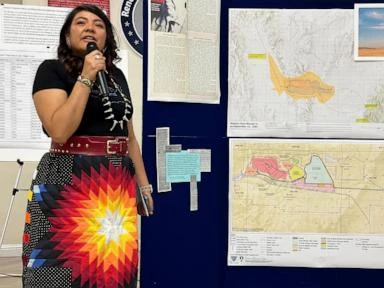Nevada Tribe Prioritizes Coalitions Over Lawsuits to Protect Sacred Sites
As the U.S. government continues to advance its energy agenda, a Nevada tribe is adopting a new approach to safeguarding Native American sacred sites. Rather than relying solely on lawsuits, the tribe is emphasizing the importance of building coalitions to garner public support for their cause.
Background and Context
The Nevada tribe’s strategy reflects an evolving outlook on how best to protect culturally significant areas amid increasingly pressing environmental and development challenges. With the expansion of energy projects and infrastructure in the region, the tribe faces a heightened urgency to safeguard their ancestral lands and sacred sites.
The impending threat to these locations has served as a catalyst for the tribe to reevaluate their tactics for preservation and advocacy, prompting a shift towards collaborative alliances as a means of amplifying their voice and impact.
Effective Engagement Through Coalitions
By focusing on coalition-building, the tribe aims to engage with a broader spectrum of stakeholders, including environmental groups, government agencies, and concerned citizens. This multifaceted approach seeks to create a unified front in the preservation efforts and bring about a more formidable defense of the sacred sites.
Emphasizing the power of alliances, the tribe recognizes that joining forces with like-minded organizations can bolster their stance and generate enhanced advocacy for the protection of Native American heritage and the surrounding environment.
Shifting Away From Solely Relying on Lawsuits
While legal action has historically been a primary recourse for addressing threats to sacred sites, the Nevada tribe is redirecting its focus toward proactively fostering collaborations to prevent such conflicts from arising in the first place.
By preemptively engaging in dialogue and partnership with various entities, the tribe seeks to establish a proactive stance that aims to thwart potential disputes, thereby avoiding the need for prolonged and costly legal battles.
Public Perception and Awareness
Central to the tribe’s strategy is the cultivation of public support and awareness regarding the significance of these sacred sites. Efforts to educate and enlighten the wider community about the cultural, spiritual, and environmental value of these locations will be critical in garnering broader backing for their protection.
Through increased public awareness and understanding, the Nevada tribe endeavors to solidify the perception of these sacred sites as vital components of both their cultural heritage and the wider ecological landscape, thereby galvanizing public sentiment in favor of their preservation.
Environmental Sustainability and Cultural Preservation
More than merely preserving historical and spiritual landmarks, the Nevada tribe’s approach underscores the indispensable connection between cultural preservation and environmental sustainability. By emphasizing the intrinsic link between the protection of sacred sites and broader ecological well-being, the tribe seeks to underscore the universal relevance of their cause.
Through this broader lens, the tribe seeks to engage not only with groups directly concerned with Native American rights but also with environmental advocates and sustainability proponents, drawing attention to the interconnectedness of cultural heritage and environmental equilibrium.
Conclusion
As the U.S. government advances its energy agenda amidst growing environmental and cultural conservation concerns, the Nevada tribe’s proactive shift towards coalition-building represents a fundamental repositioning in their approach to safeguarding sacred sites.
By leveraging the strength of alliances, generating public support, and emphasizing the interconnectedness of cultural heritage and environmental preservation, the tribe endeavors to shape a landscape where sacred sites are shielded not just by legal defense but by broader societal understanding and collaboration.
Source: abcnews








No Comments